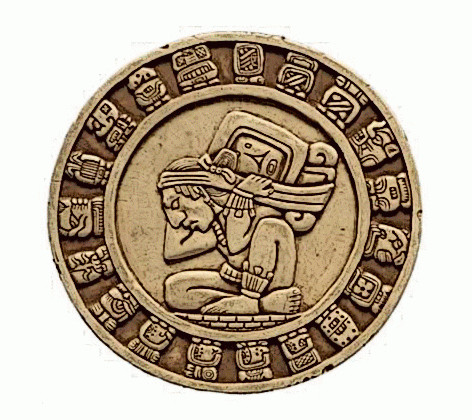Quizá una de las realidades irrefutables de la vida es lo que hemos denominado tiempo, ese transcurrir terrestre marcado por el paso de esa estrella enana amarilla, tipo espectral G2-V, que hemos llamado Sol, Helios, Inti, Ra, Suria, Huitzilopochtli, Amaterasu, Arina y que se configura como nuestro astro principal, literalmente la guía de nuestras vidas. Antes incluso de que aparezca en el cielo, ya nos brinda la luz y la energía que cada ser vivo requiere para subsistir, su fuerza ígnea y resplandeciente es nuestra principal fuente de alimento, existimos porque existe y su presencia define nuestro sistema temporal. Quizá si el sol saliera todos los días y nada pasara y cada día fuera idéntico al otro, su paso sería irrelevante, sin embargo, desde tiempos atávicos podemos observar cómo todo cambia a su paso, nunca un día es igual a otro, aunque lo parezca, así también el cielo no permanece inamovible y toda persona que viva en un sitio sin contaminación lumínica lo puede confirmar.
Quizá así fue cómo comenzó todo, primero enterrando palitos en la tierra para observar el paso, la sombra, del astro y así contar sus horas en los arcaicos relojes de sol, para después marcar otros palitos que contaran el paso de los días; luego, en la noche, percibimos otra fuente de luz que calma nuestros tenebrosos temores, la Luna, Selene, Killa, Hécate, Soma, Ix Chel, Tsukuyomi, Ningal, un pequeño satélite natural que refleja la luz del Sol, así su luz y brillosidad dependen de la relación de su trayectoria con la solar y, aunque siempre vemos su misma cara, nunca su forma es igual, crece y decrece día con día. Quizá fue natural y lógico que las rayitas que se hacían en los palitos para contar cada sol empezaran a combinarse con las de la luna y, pues, como en esas épocas la gente tenía tiempo para habitar y disfrutar su entorno, fácil y rápidamente establecieron ciertas relaciones de estas cuentas con las manifestaciones y realidades de sus cuerpos, que crecían, cambiaban, menstruaban; de los paisajes; sus cultivos; los animales que les acompañaban que también nacían y crecían y se reproducían y morían como todas, como todo.
Quizá por esta razón los primeros calendarios son lunares, datados hace 8 mil años, luego notamos los ciclos estacionales y hace 5 mil años surgían en Mesopotamia los primeros calendarios lunisolares y, como suele ser en la historia de la humanidad: si hay cuenta, hay cuento, el signo numérico y el lingüístico son hermanos siameses separados al nacer y criados por familias un poco diferentes, los números y las cuentas explican exactitudes e irrefutabilidades, mientras las letras y los cuentos registran y manifiestan lo incierto, las relaciones que establecemos entre ellas, lo que Heráclito define como logos y que luego la tradición cristiana ha insistido en denominar verbo, la razón o la ley detrás del funcionamiento del universo que explica el mundo y establece un principio de orden, como la lógica, la biología, la astrología y tantas otras que interpretan este logos desde la disciplina que les domina.
Quizá sea necesario indicar que en Abya Yala, como en muchos territorios antes de los imperios, convivían diversas formas de contar el tiempo según su uso y así coexistían en el mismo lapso, sincronizados, los calendarios de cultivos, de fiesta, de días sagrados, de días de reproducción, hasta que el papa Gregorio XIII decidió imponer su cuenta y dejarnos con días que hablan de astros y planetas y meses que sólo expresan un orden numérico, antes cada día tenía su afán, su misión, su sentido, ahora sólo celebran a un/a santo/a. Quizá esto fue lo que incentivó a José Argüelles a lanzar su Ley del Tiempo, expresada en la fórmula E(T)= Arte[1], que busca instaurar un Sincronario[2] que se rija por la frecuencia del tiempo galáctico 13:20, 13 lunas y 20 dedos para contar, lo que significaría pasar a un sistema vigesimal, seguramente esto sólo traerá confusión ya es complejo pasar de millas a kilómetros o de kilos a libras… Porque lo que sí se puede afirmar, sin duda, es que toda ciencia, sea social o exacta se basa en convenciones, acuerdos, normativas y protocolos, porque si bien todos tenemos pulgares, no todas las pulgadas son iguales
Perhaps one of the irrefutable realities of life is what we have called time, that terrestrial pace marked by the path of that yellow dwarf star, spectral type G2-V, which we have called Sol, Helios, Inti, Ra, Suria, Huitzilopochtli, Amaterasu, Arina and who is configured as our main star, literally the guide of our lives. Before it even appears in the sky, it already provides us with the light and energy that each living being requires to survive, its fiery and resplendent force is our main source of food, we exist because it exists and its presence defines our temporal system. Perhaps if the sun rose every day and nothing happened and each day was identical to the other, its passage would be irrelevant, however, since atavistic times we can observe how everything changes in its journey, one day is never like another, even if it seems so. Thus also the sky doesn’t remains immovable and anyone who lives in a place without light pollution can confirm it.
Perhaps that is how it all began, first by burying sticks in the ground to observe the passage, the shadow, of the star and thus count its hours on the archaic sundials, and then mark other sticks that would count the passing of the days; later, at night, we perceive another source of light that calms our dark fears, the Moon, Selene, Killa, Hecate, Soma, Ix Chel, Tsukuyomi, Ningal, a small natural satellite that reflects the light of the Sun, thus its light and brightness depends on the relationship of its trajectory with the solar one and, although we always see its same face, its shape is never alike, it grows and decreases day by day. Perhaps it was natural and logical that the lines that were made on the sticks to count each sun began to combine with those of the moon and, since in those times people had time to dwell and enjoy their environment, they easily and quickly established certain relationships of these accounts with the manifestations and realities of their bodies, which grew, changed, menstruated; of the landscapes; their crops; the animals that accompanied them that were also born and grew and reproduced and died like everyone else, like everything else.
Perhaps for this reason the first calendars are lunar, dated 8,000 years ago, then we notice the seasonal cycles and 5,000 years ago the first lunisolar calendars appeared in Mesopotamia and, as is often the case in human history: if there is an account, there is count, the numerical sign and the linguistic sign are siamese twins separated at birth and raised by slightly different families, numbers and accounts explain exactitudes and irrefutabilities, while letters and stories record and reveal the uncertainty, the relationships that we establish between them, what Heraclitus defines as logos and that later the christian tradition has insisted on calling verb, the reason or the law behind the operation of the universe that explains the world and establishes a principle of order, such as logic, biology, astrology and many others that interpret this logos from the discipline that dominates them.
Perhaps it is necessary to indicate that in Abya Yala, as in many territories before the empires, different ways of counting time lived together according to its use and thus coexisted in the same period, synchronized, the calendars of crops, festivals, sacred days, days of reproduction, until Pope Gregory XIII decided to impose his account and leave us with days that speak of stars and planets and months that only express a numerical order, before each day had its desire, its mission, its meaning, now they only celebrate a saint. Perhaps this was what motivated José Argüelles to launch his Law of Time, expressed in the formula E (T) = Art [1] , which seeks to establish a Synchronary [2] that is governed by the frequency of galactic time 13:20, 13 moons and 20 fingers to count, which means to adopt a vigesimal system, surely this will only bring confusion, it is complex to go from miles to kilometers or from kilos to pounds … Because that it can be affirmed, without a doubt, is that all science, be it social or exact, is based in conventions, agreements, regulations and protocols, because although we all have thumbs, not all inches are the same …
[1] Energía x Tiempo= Arte / Energy x Time= Art
[2] El sincronario surge del acercamiento de Argüelles a los calendarios mayas, pero no es parte de su cultura, es la propuesta que elabora este activista planetario nacido en EEUU al admirarse con la ciencia maya. / The Synchronary arises from Argüelles’ approach to the Mayan calendars, but it is not part of their culture, it is the proposal that this US-born planetary activist makes as he admires the Mayan science.








